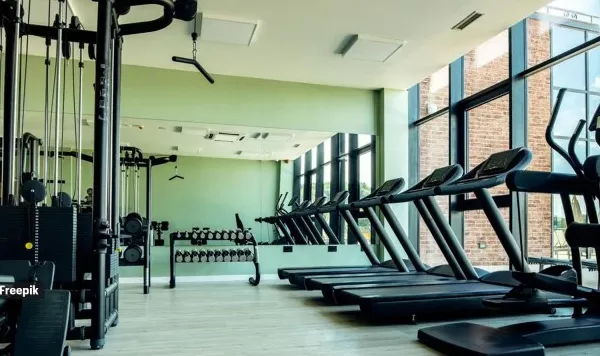Gyms, typically seen as spaces for promoting physical fitness, may unintentionally foster the growth of harmful pathogens, including ringworm. This common fungal infection, known medically as tinea, thrives in warm, damp environments—making gyms particularly vulnerable to outbreaks. The combination of shared equipment, high humidity, and frequent skin-to-surface contact makes these facilities a prime environment for ringworm transmission.
Despite its name, ringworm is not caused by a worm but by fungi that affect the outer layer of the skin. According to Dr. Natasha Vijayendran, a dermatologist and hair transplant surgeon, “Ringworm spreads through direct contact with infected skin or indirect contact with skin particles that have shed from an infected person.” This means that any area where skin comes into contact with surfaces—such as gym equipment, sauna rooms, or benches—becomes a potential breeding ground for the fungus.
Gym Equipment: A Hidden Danger
Common gym equipment, including handles, weights, and machines, is a frequent point of contact for individuals, creating an ideal environment for fungi to thrive. Additionally, high-moisture areas such as sauna rooms or benches—especially where towels are shared—pose added risks due to the combination of heat, sweat, and skin-to-surface contact.
The Long-Term Effects of Ringworm
While ringworm is not typically harmful to overall immune function, repeated infections can lead to long-term skin damage. Dr. Vijayendran notes that recurring cases can result in thinning skin, rough patches, and even changes in pigmentation. Individuals with weakened immune systems—such as those with diabetes or certain vitamin deficiencies—are at higher risk for repeated infections and complications.
To help prevent recurrence, Dr. Vijayendran emphasizes the importance of maintaining good overall health. Proper nutrition, regular hygiene practices, and managing underlying health conditions are essential for reducing the risk of repeated fungal infections.
Protecting Yourself from Ringworm at the Gym
Taking preventative measures can significantly reduce the likelihood of contracting ringworm during gym visits. Dr. Vijayendran recommends showering immediately after a workout and changing out of sweaty clothes to avoid prolonged exposure to moisture, which promotes fungal growth. Applying antifungal powders to areas prone to infection can also offer additional protection.
Cleaning gym equipment before and after use is equally important. Wiping down machines and other shared equipment with disinfectant wipes helps eliminate sweat and saliva residues that may harbor the fungus.
The Role of Gym Owners in Preventing Transmission
Gym owners and staff have a crucial role in limiting the spread of fungal infections. Regular cleaning and sanitization of equipment throughout the day are key measures to reduce the risk. Dr. Vijayendran stresses that maintaining strict hygiene protocols, especially in communal spaces, is essential. Providing disposable towels and wipes for patrons can also help minimize transmission. Additionally, gyms can raise awareness by posting educational materials about the risks of fungal infections and the importance of hygiene.
Conclusion
While gyms are essential for physical fitness, they can also inadvertently host harmful pathogens like ringworm if proper hygiene standards are not maintained. By understanding the transmission routes and taking simple precautions—such as regular bathing, using antifungal powders, and sanitizing equipment—both gym-goers and staff can significantly reduce the risk of fungal infections and maintain a healthy, safe environment for everyone.
Related topics:


























